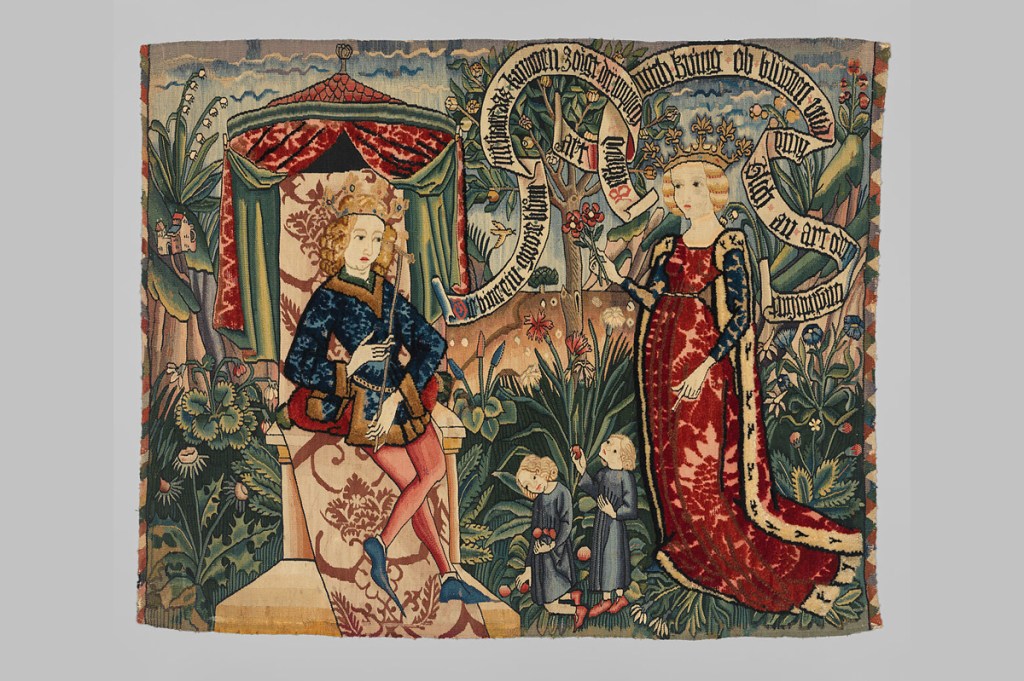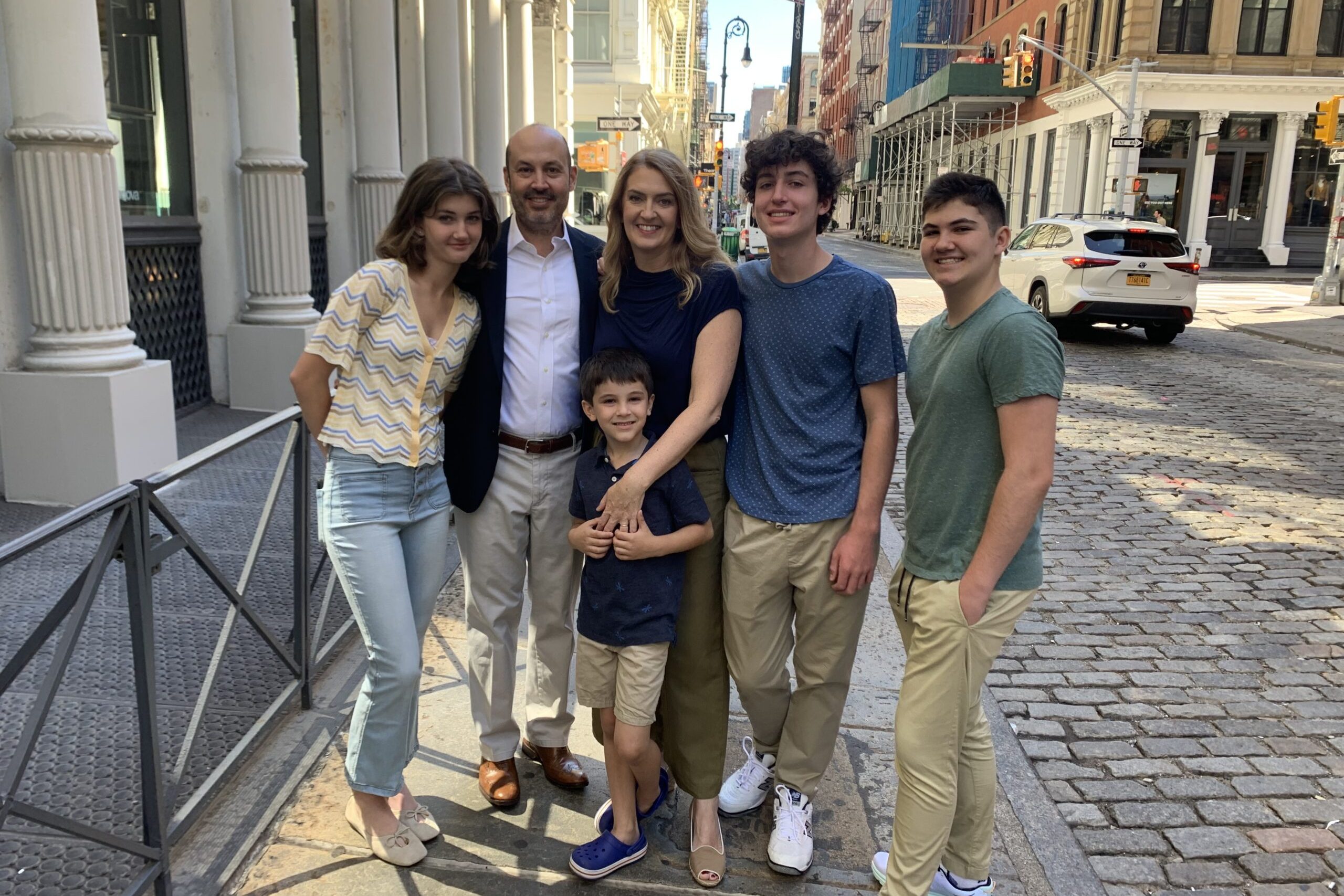Unwitting historians often reveal just as much – if not more – about their own time and place than the time and place they claim to describe. The curators of Spectrum of Desire: Love, Sex, and Gender in the Middle Ages, a new exhibition at the Met Cloisters, are prime examples. Gathering manuscript illustrations, paintings, sculptures, jewelry and more from the 13th to 16th centuries, the exhibition promises to uncover “the hidden sexuality and sensuality of medieval art.” The intent is “queering the past,” and the objects were chosen to show expressions of “desire” in as many forms as possible – a saucy premise that appeals to contemporary trends. But many of the new interpretations range from the woolly to the laughable.
The show aims to “uncover new meanings but also make way for moments of ambiguity.” Ambiguity is the keyword. One of the first pieces is a tiny illustration of a young man gazing at his reflection in a pool of water, from a 14th-century French manuscript of the allegorical courtly love poem Roman de la Rose. The image may be of Narcissus, as the label claims, or it may actually be Amant, the poem’s narrator, who in his dream stumbles upon the Fountain of Love where Narcissus perished. He thus risks succumbing to a similar fate. Does this image of a man admiring his own face really “hint at homoerotic longing,” as the display text suggests, or is it rather a warning against self-obsession and excessive pride?
Later on, we see two illustrations of female saints, Wilgefortis and Marina, taking on the appearance of men. While the exhibition seems to interpret these examples in light of modern ideas about gender fluidity, their hagiographies reveal they were acting out of self-preservation, not personal expression. Wilgefortis, pictured bearded on a cross, asked God to make her ugly to escape a forced marriage to a pagan; her father crucified her for this disobedience. Marina, in a 15th-century Belgian manuscript of The Golden Legend, is shown in monk’s dress. As she had no family apart from her father, the text says, she joined him at a monastery in disguise as “Marinos,” a ruse she kept up after his death. In the harsh late-antique world, it isn’t hard to imagine why a kinless young woman might think it prudent to conceal her identity while taking refuge in an all-male residence.
There are some genuinely transgressive pieces displayed that were likely to have been judged acceptable to their medieval owners only because they depict legends set in a pre-Christian past. We see a multicolored 15th-century Venetian glass goblet illustrating the violent apocryphal tale of Virgil, here a poet-sorcerer, and a Roman princess, Febilla. After being publicly humiliated by the maiden, Virgil extinguishes all light in the city and fills her with hot coal. To relight their candles, the villagers are pictured queuing up to insert them into her… use your imagination (or, preferably, don’t), as blood streams down her legs. A 14th-century French tablet depicts the same scene in carved ivory, only here Febilla has a wry smile, indicating the scene is meant to be taken as a dirty joke.
High points are the detailed saddle inlaid with bone and boxes made of ivory and embossed leather, which show scenes of courting couples, including a woman offering a belt to a man and another running a comb through her lover’s hair. Decorative examples of combs are displayed nearby. Giving a comb suggested a special intimacy, as a woman’s hair would only be loosened in private. (The catalog tells us that delousing a loved one’s scalp was a way of showing affection in a time of plague and pestilence.)
The insistence, however, on sexualized readings of artworks depicting suffering holy figures is tiresome and tells us a lot more about the preoccupations of the curators than the intentions of the artists. For example, in a late 14th-century devotional oil panel by the French painter Jean de Beaumetz, once hung in a monk’s cell at the Carthusian monastery at Champmol, we see a sickly looking crucified Christ with copious amounts of blood dripping over his body. His head flops down pathetically, lips tinged with gray. To suggest, as the wall text and catalog do, that such an image could inspire “impure thoughts” on account of its “diaphanous loincloth,” without evidence, is to accuse its monastic viewer of harboring a state of mind so dark the accusation feels libelous, even today.
There isn’t space here to delve into the improbable suggestion that solemn wooden sculptures of the Virgin Mary and her cousin Elizabeth, and of Jesus and John the Evangelist, allude to same-sex desire only on account of their right hands clasping, a gesture associated with betrothed couples. You-know-what sells, I guess, so you can’t blame anyone too much for trying to spice things up at the Met’s medieval outpost. In the age that birthed chivalric romances and courtly poetry, artists hardly shied away from portraying desire – but this exhibition spends too much time looking in the wrong places.
This article was originally published in The Spectator’s November 10, 2025 World edition.


























Leave a Reply